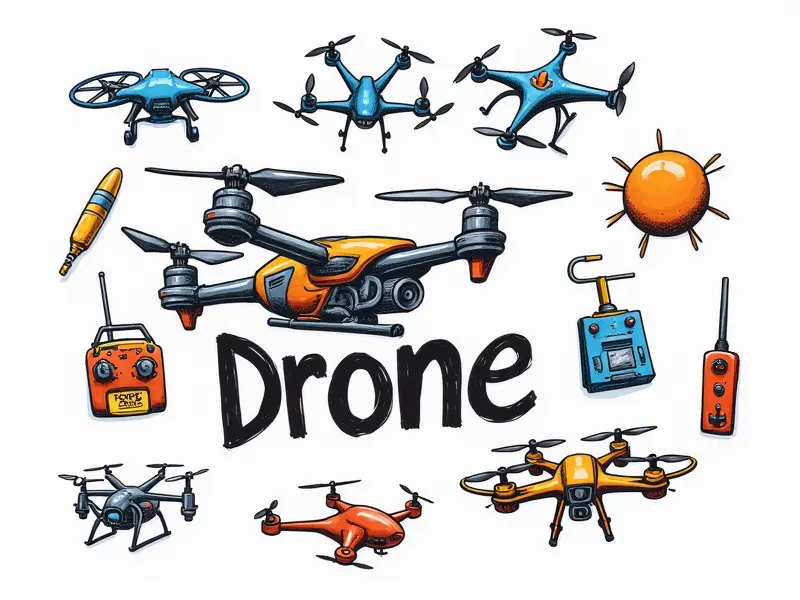Can I fly a quadcopter at night?

Legal to Fly Drones at Night?
Flying a quadcopter or drone at night is subject to strict regulations in most countries. In the United States, for example, Federal Aviation Administration (FAA) rules stipulate that drones must be flown during daylight hours unless certain conditions are met. The FAA requires operators to obtain specific waivers for nighttime operations and adhere to additional safety guidelines.
Best Practices for Night Drone Operations
To safely operate a quadcopter at night, it's essential to follow best practices that enhance visibility and reduce the risk of accidents. These include:
- Lights and Markings: Ensure your drone is equipped with bright LED lights for increased visibility.
- Battery Management: Check battery levels before takeoff to avoid mid-flight power issues.
- Weather Conditions: Monitor weather forecasts to avoid flying in adverse conditions like fog or rain.
Is Night Flying Safe for Quadcopters?
Flying a quadcopter at night presents unique challenges and risks. Reduced visibility, decreased reaction time, and potential interference from other nighttime activities can all contribute to safety concerns. However, with proper planning and adherence to regulations, it is possible to fly safely in the dark.
Tips for Nighttime Quadcopter Flying
Here are some tips to ensure a safe and successful night flight:
- Pre-Flight Checks: Conduct thorough pre-flight inspections, focusing on lighting systems and battery life.
- Familiarize Yourself with the Area: Know your surroundings well before taking off in low-light conditions.
- Use a Companion: Have an observer or spotter to assist you during nighttime operations.
Nighttime Challenges in Quadcopter Flying
The primary challenges of flying quadcopters at night include:
- Vision Impairment: Limited visibility can make it difficult to spot obstacles and hazards.
- Temperature Fluctuations: Temperature changes can affect battery performance and drone stability.
- Navigational Difficulties: GPS signals may be weaker at night, complicating navigation.
Safe Night Flight with Quadcopters
To ensure a safe flight during nighttime hours, consider the following measures:
- Use High-Quality Lights: Invest in high-quality LED lights for optimal visibility.
- Plan Your Route Carefully: Map out your route beforehand to minimize risks and avoid obstacles.
- Maintain Constant Communication: Keep communication lines open with any observers or spotters you have.
Nighttime Drone Regulations Explained
The FAA requires drone operators who wish to fly at night to obtain a waiver. This process involves submitting detailed plans and safety protocols, ensuring that the operator can demonstrate their ability to conduct safe nighttime operations.
Legalities of Nighttime Drone Operations
Operating drones legally at night often depends on obtaining special permission from aviation authorities. In addition to FAA regulations in the U.S., other countries may have similar requirements or restrictions, such as:
- Canada: Transport Canada requires specific approval for nighttime flights.
- Europe: The European Union Aviation Safety Agency (EASA) also mandates special permissions.
Navigating Night Sky with Drones
Flying a quadcopter at night requires careful navigation due to reduced visibility and potential interference from other nighttime activities. Use the following strategies:
- Use GPS: Rely on your drone’s GPS system for accurate positioning.
- Avoid Obstacles: Be vigilant about avoiding trees, buildings, and other obstacles.
Flying RC Quadcopters in the Dark
The thrill of flying a quadcopter at night is unparalleled. However, it demands extra caution and preparation to ensure safety. Here are key considerations:
- Visibility Enhancers: Use additional lighting equipment like strobe lights or floodlights.
- Battery Backup: Always have spare batteries ready in case of unexpected power issues.
Flying a Drone Safely at Night
To fly your drone safely at night, adhere to the following guidelines:
- Follow Regulations: Ensure you are compliant with all relevant aviation regulations.
- Practice Precautions: Take extra safety measures such as using additional lighting and having observers on hand.
Conclusion
Flying a quadcopter at night can be an exhilarating experience, but it requires careful planning and adherence to strict regulations. By following the best practices outlined above and taking necessary precautions, you can enjoy safe and legal nighttime drone operations. Always prioritize safety and compliance to ensure a successful flight every time.

